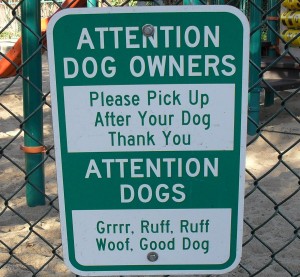
Forget about “show me a sign” as Breaking Point sings. Or “show me the money,” as the character Rod Tidwell yelled at Jerry Maguire in the movie of the same name.
In today’s time-starved, skeptical work world, time is often more valuable than money. (Just consider all the conveniences you’re willing to pay for to save some time. And this applies at work too.)
Before we’re willing to give a new change initiative at work our time and attention—much less our commitment—we need to see multiple signs that the leaders are serious and committed to the change themselves.
For example, take this organization I’ve been working with. Employees in one office have been vocally complaining to co-workers, local leadership and corporate HR that they feel disenfranchised for a number of reasons. (To protect the organization’s identity, I’ll say no more about the reasons.)
The extremely low scores on the most recent employee engagement survey punctuate their points. Also, a few employees have started walking with their feet, primarily transferring to other offices.
We’re working on several interventions to turn things around. So far, employees through one-on-one conversations and formal feedback have said they’re pleased with the actions; however, many people also have said they doubt whether the changes will stick.
So we need to show everyone some small supportive signs on a daily basis to reinforce the big actions and gain some momentum. These signals would align with the words and other actions and would demonstrate that we’re moving in the right direction—not backsliding, drifting or stopping.
For example, we should be using as least five different types of signs:
1. Directions—Explaining where we are in the change process, such as providing status updates about the formation of rapid response teams, the team members, their work to date, and their upcoming plans.
2. Reminders—Recapping what’s been done to date, what’s on the horizon, and how everything links together.
3. Symbolic steps—Having leaders do things that support the change, such as spending more time in the office and meeting informally with entry level employees.
4. Reinforcements—Catching employees doing the right things that support the change and recognizing them privately and publicly, which will encourage others to join them.
5. Milestone markers—Acknowledging the progress we’re making—the good, bad, and ugly—at key dates, such as the 30-day mark since the formation of the rapid response teams or at other critical targets.
So far, I have to admit I’m having more success pointing out the misleading and contradictory signs the leaders are sending rather than praising the leaders for their high-quality signs—which is not an ideal situation. (For example, when leaders agree that employees are working very long hours and should try to have a healthy life/work integration, leaders shouldn’t send employees email messages on a summer Saturday afternoon.)
Those who coach or train humans, dogs, and other mammals know that you get the best results in behavior change when you carefully reward the good behaviors and ignore the bad. (For a quick, enjoyable read about this, check out Amy Sutherland’s New York Times essay What Shamu Taught Me About a Happy Marriage. She later turned this into a book, What Shamu Taught Me about Life, Love, Marriage, which is soon to be a motion picture.) So I want to find good behaviors to commend, especially around this important area of signs.
One of the challenging things about signs is that some humans (and almost all dogs and other mammals) excel at noticing and reading signs. So until employees see multiple signs all pointing to the positive direction of the change, they’re not going to have any reason to believe that these leaders are serious about the change.
How well do the signs you send match your words and other actions?

0 Comments